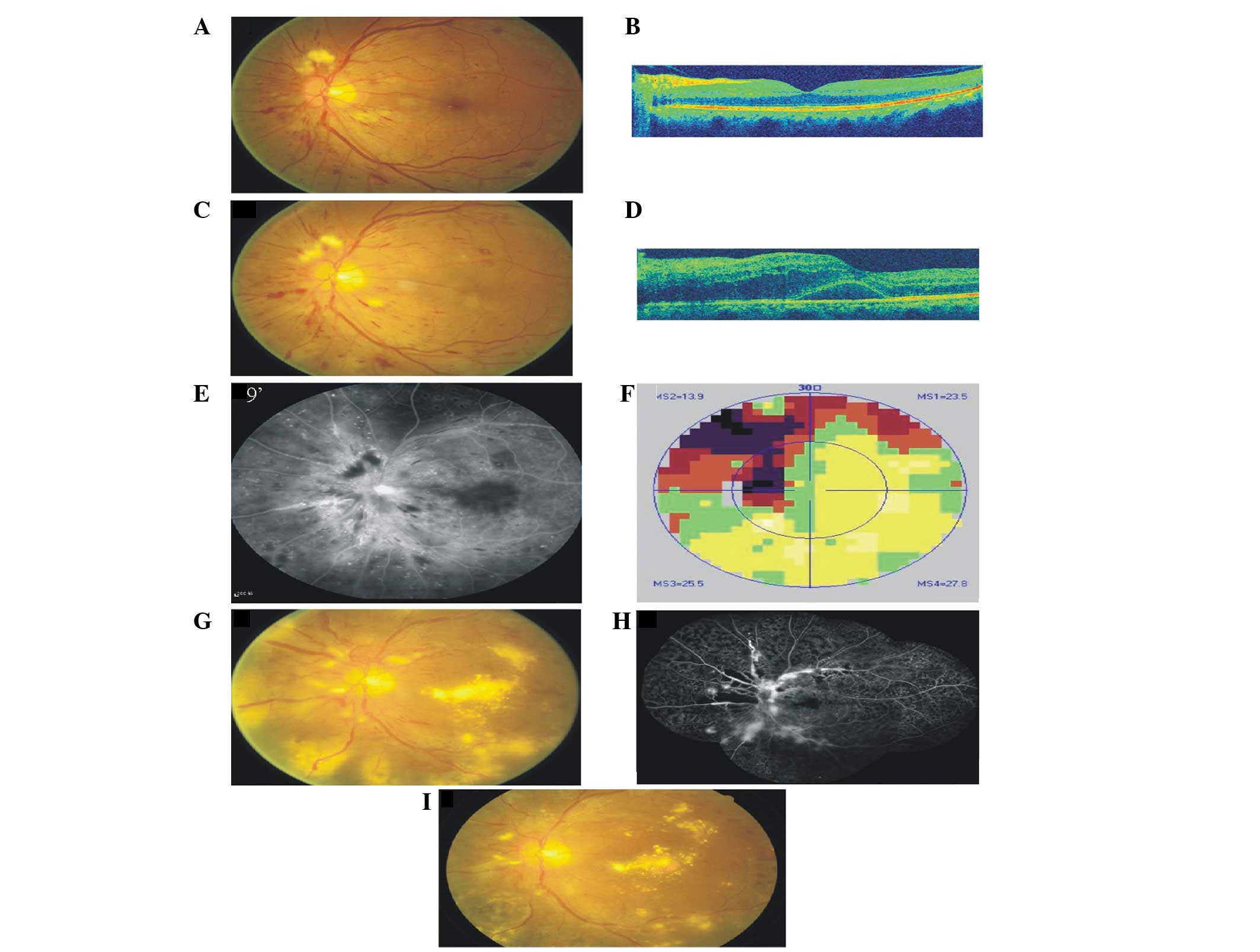|
1.
|
Kaiser PK: Antivascular endothelial growth
factor agents and their development: therapeutic implications in
ocular diseases. Am J Ophthalmol. 142:660–668. 2006. View Article : Google Scholar
|
|
2.
|
Simó R and Hernández C: Intravitreous
anti-VEGF for diabetic retinopathy: hopes and fears for a new
therapeutic strategy. Diabetologia. 51:1574–1580. 2008.PubMed/NCBI
|
|
3.
|
Burger RA: Experience with bevacizumab in
the management of epithelial ovarian cancer. J Clin Oncol.
25:2902–2908. 2007. View Article : Google Scholar : PubMed/NCBI
|
|
4.
|
Magdelaine-Beuzelin C, Pinault C, Paintaud
G and Watier H: Therapeutic antibodies in ophthalmology: old is new
again. MAbs. 2:176–180. 2010. View Article : Google Scholar : PubMed/NCBI
|
|
5.
|
Lambrechts D and Carmeliet P: Genetics in
zebrafish, mice and humans to dissect congenital heart disease:
insights in the role of VEGF. Curr Top Dev Biol. 62:189–224. 2004.
View Article : Google Scholar : PubMed/NCBI
|
|
6.
|
Lee S, Chen TT, Barber CL, Jordan MC,
Murdock J, Desai S, Ferrara N, Nagy A, Roos KP and Iruela-Arispe
ML: Autocrine VEGF signaling is required for vascular homeostasis.
Cell. 130:691–703. 2007. View Article : Google Scholar : PubMed/NCBI
|
|
7.
|
Nishijima K, Ng YS, Zhong L, et al:
Vascular endothelial growth factor-A is a survival factor for
retinal neurons and a critical neuroprotectant during the adaptive
response to ischemic injury. Am J Pathol. 171:53–67. 2007.
View Article : Google Scholar
|
|
8.
|
Wei W, Chen ZW, Yang Q, et al:
Vasorelaxation induced by vascular endothelial growth factor in the
human internal mammary artery and radial artery. Vascul Pharmacol.
46:253–259. 2007. View Article : Google Scholar : PubMed/NCBI
|
|
9.
|
Saint-Geniez M, Kurihara T, Sekyama E, et
al: An essential role for RPE-derived solube VEGF in the
maintenance of the choriocapillaris. Proc Natl Acad Sci USA.
106:18751–18756. 2009. View Article : Google Scholar : PubMed/NCBI
|
|
10.
|
Csaky KG, Baffi JZ, Byrnes GA, et al:
Recruitment of marrow-derived endothelial cells to experimental
choroidal neovascularization by local expression of vascular
endothelial growth factor. Exp Eye Res. 78:1107–1116. 2004.
View Article : Google Scholar
|
|
11.
|
Fung AE, Rosenfeld PJ and Reichel E: The
International Intravitreal Bevacizumab Safety Survey: using the
internet to assess drug safety worldwide. Br J Ophthalmol.
90:1344–1349. 2006. View Article : Google Scholar : PubMed/NCBI
|
|
12.
|
Hosseini H and Razeghinejad MR: Anterior
ischemic optic neuropathy after intravitreal injection of
bevacizumab. J Neuroophthalmol. 29:160–161. 2009. View Article : Google Scholar : PubMed/NCBI
|
|
13.
|
Battaglia Parodi M, Iacono P, Cascavilla
ML, Zucchiatti I, Kontadakis DS, Vergallo S and Bandello F:
Sequential anterior ischemic optic neuropathy and central retinal
artery and vein occlusion after ranibizumab for diabetic macular
edema. Eur J Ophthalmol. 20:1076–1078. 2010.
|
|
14.
|
Kim KS, Chang HR and Song S: Ischemic
change after intravitreal bevacizumab (Avastin) injection for
macular oedema secondary to non-ischemic central retinal vein
occlusion. Acta Ophthalmol (Copenh). 86:925–927. 2008. View Article : Google Scholar : PubMed/NCBI
|
|
15.
|
von Hanno T, Kinge B and Fossen K: Retinal
artery occlusion following intravitreal anti-VEGF therapy. Acta
Ophthalmol. 88:263–266. 2010.PubMed/NCBI
|
|
16.
|
Bakri SJ, Snyder MR, Reid JM, Pulido JS
and Singh RJ: Pharmacokinetics of intravitreal bevacizumab
(Avastin). Ophthalmology. 114:855–859. 2007. View Article : Google Scholar : PubMed/NCBI
|
|
17.
|
Kim H, Fariss RN, Zhang C, Robinson SB,
Thill M and Csaky KG: Mapping of the neonatal Fc receptor in the
rodent eye. Invest Ophthalmol Vis Sci. 49:2025–2029. 2008.
View Article : Google Scholar : PubMed/NCBI
|
|
18.
|
Aiello LP, Northrup JM, Keyt BA, Takagi H
and Iwamoto MA: Hypoxic regulation of vascular endothelial growth
factor in retinal cells. Arch Ophthalmol. 113:1538–1544. 1995.
View Article : Google Scholar : PubMed/NCBI
|
|
19.
|
Blaauwgeers HG, Holtkamp GM, Rutten H,
Witmer AN, Koolwijk P, Partanen TA, Alitalo K, Kroon ME, Kijstra A,
van Hinsbergh VWM and Schlingermann RO: Polarized vascular
endothelial growth factor secretion by human retinal pigment
epithelium and localization of vascular endothelial growth factor
receptors on the inner choriocapillaris. Evidence for a trophic
paracrine relation Am J Pathol. 155:421–428. 1999.
|
|
20.
|
Sinapis CI, Routsias JG, Sinapis AI,
Sinapis D, Agrogiannis G, Pantopoulou A, Theocharis SE, Baltatzis
S, Patsouris E and Perrea DN: Pharmacokinetics of intravitreal
bevacizumab (Avastin(R)) in rabbits. Clin Ophthalmol. 5:697–704.
2011. View Article : Google Scholar : PubMed/NCBI
|















